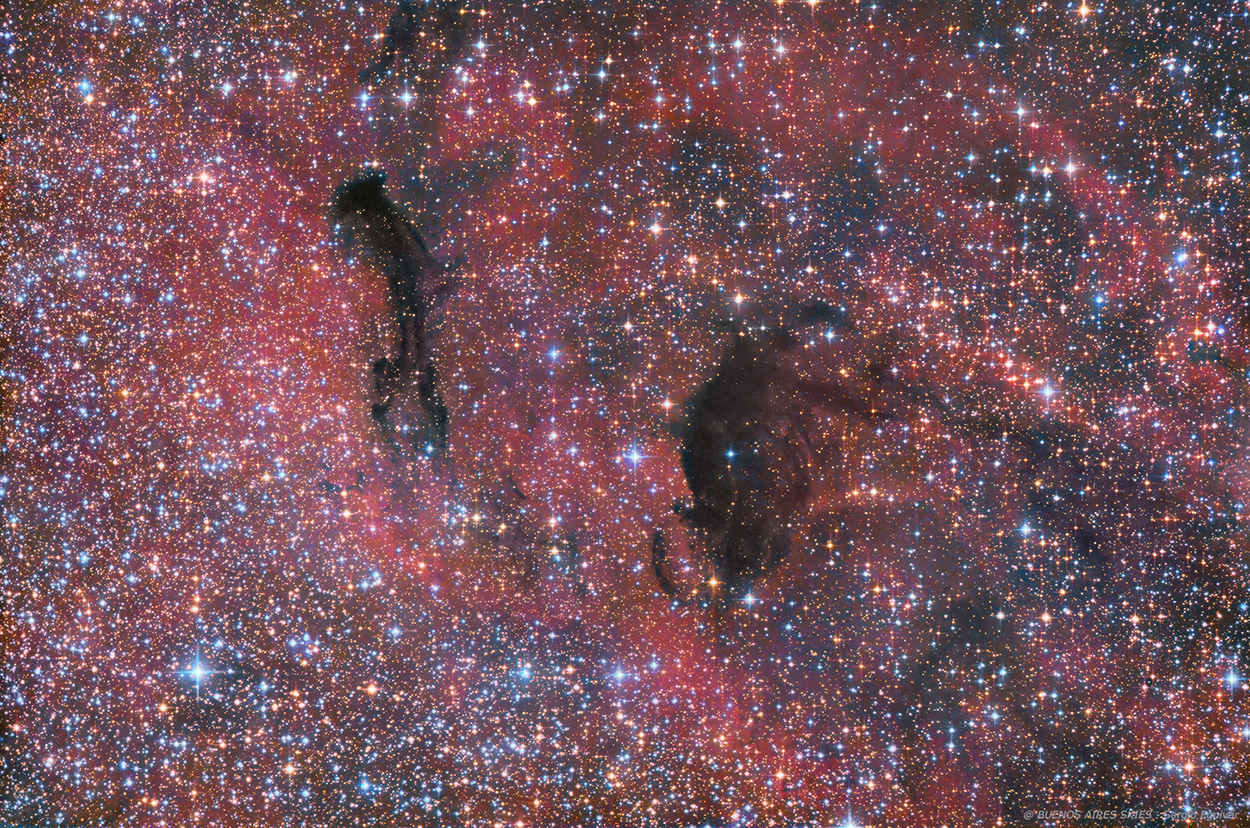
| HOME |
BARNARD 92 & 93 AKA LDN 323 & LDN 327
DARK CLOUDS IN SAGITTARIUS
(Image centered at: ra 18 h:17 m / dec - 18º 14')
CLICK THE IMAGE FOR A HIGH RESOLUTION VIEW
June - 2024, Home Backyard in Martinez, Buenos Aires, Argentina
DATA
TYPE: Dark Clouds
APPARENT DIAMETER: 12 x 6 arc minutes and 12 x 2 respectively
APPARENT MAGNITUDE (V): n/a
DISTANCE: a bit less than 10.000 light years
IMAGE INFORMATION
INSTRUMENT: 6" ORION OPTICS UK (Ultra Grade Optics) w/Sky Watcher Coma Corrector (0.9x) working at at f4.5
CAMERA: QHY 183 MONO
MOUNT: VIXEN GDPX, OAG with Starlight Xpress Lodestar
FILTERS: BAADER LRGB Set
SKY CONDITIONS: urban skies - Bortle 8
EXPOSURES: LHARGB (60,120,45,45,45)
OBJECT DESCRIPTION AND IMAGE SESSION
Dark nebulae Barnard 92 and Barnard 93 are located on the northern edge of Messier 24, the small Sagittarius star cloud. In this image Barnard 93 is at the left, and Barnard 92, at the right. Dark Nebulae are clouds of dust and dark matter in space that are opaque, or nearly so, that obscure the stars behind them. These dark nebulae get their name from pioneer astrophotographer Edwin Emerson Barnard, who cataloged many of them 0photographically, publishing a list in a paper in 1919 in the Astrophysical Journal. The document contains 182 dark clouds entries and in 1927 publish another follow-up publication which was expanded to include 349 entries. These "dark nebulae" are believed to be the result of molecular clouds of dust and gas which are present in our line of sight and which absorb the starlight originating behind them, thus providing the earth-based observer working in the visible spectrum the illusion of a black "void" (these dark nebulae are NOT associated with dark matter!). We have included the some shots with Ha frequency to show ionized clouds within the star cloud.